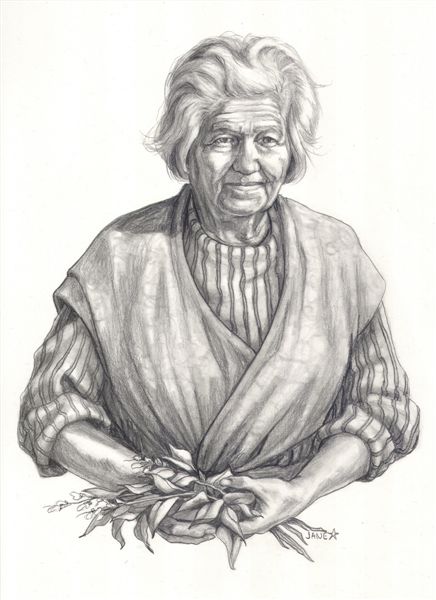
Midwife / Healer
Medicine and healing in 17th century Scotland
If you lived in Edinburgh and had money or stature, you could have engaged a trained physician. Healers, midwives, and bonesetters were available for common folk. This trade was passed down from mother to daughter. These women were skilled in the use of herbs and natural materials such as tar, honey, and garlic to cure disease or treat wounds.
Garlic was known to calm spasms, kill parasites, and fight infections. Honey healed stubborn wounds. Alfalfa treated digestive weakness and restored lost vitality. Burdock was good for skin eruptions; it induced sweating. Blackberry relieved diarrhea. Catnip calmed nerves and reduced fever. Dandelion root and flower stimulated digestion. Borage was good for rheumatism. An infusion of mugwort could restore a woman’s moon cycle and was good for digestive ailments, frayed nerves, and sleeplessness.
Medicinal herbs were often administered in teas or salves. To strengthen them, they were dissolved in vinegar, which had healing properties of its own. Vinegar was thought to improve skin tone, strengthen bones, and balance the four bodily humors.
Healers were called upon to reset bone fractures and adjust dislocated joints. Sometimes they used comfrey for bone setting. The plant’s roots were dug up in spring and grated to produce a sludge, which was packed around the broken limb. This hardened to a consistency similar to plaster. Comfrey leaves, boiled as a tea, brought down swelling and muted pain.
Such was the state of medicine and healing in 17th century Scotland. In my novels, I tried to make the healing and midwifery scenes authentic, given the time and place and resources available. My advice to the reader is to NOT try them at home without formal training.
By Jeanne Treat, author of the Dark Birthright Trilogy, a tale of old Scotland
http://www.DarkBirthrightSaga.com

Comfrey

